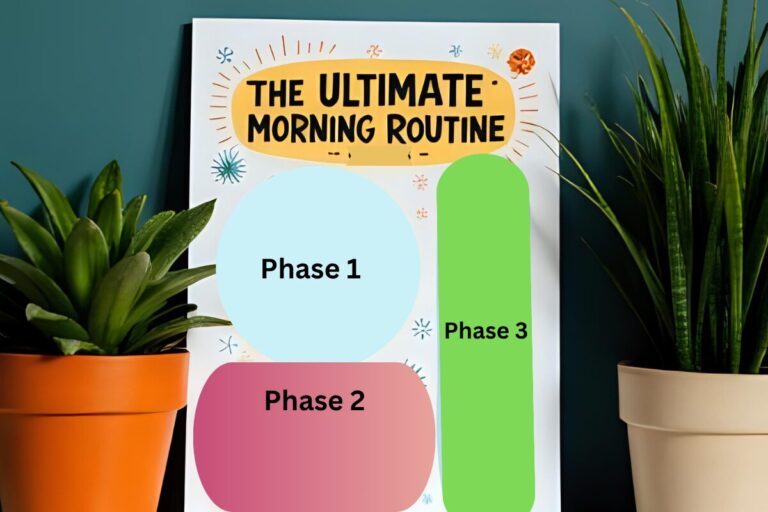Pomodoro Technique for Business: Boost Productivity Fast
The Pomodoro Technique isn’t just another productivity hack – it’s a scientifically-backed time management system that’s transforming how modern businesses operate. From Fortune 500 companies to scrappy startups, organizations worldwide are discovering that working in focused 25-minute intervals, all the way up to 50-minute intervals can unlock unprecedented levels of efficiency and creativity.
But here’s what most business leaders don’t realize: the Pomodoro Technique’s real power isn’t just in individual productivity gains. When implemented strategically across teams and departments, it creates a synchronized workflow that eliminates meeting fatigue, reduces multitasking chaos, and fosters a culture of deep, meaningful work.
In this comprehensive guide, you’ll discover how to harness this powerful technique to transform your business operations and create a more focused, efficient, and profitable organization.
Key Takeaways
- The Pomodoro Technique boosts business productivity by 25-30% through structured 25-minute work intervals followed by strategic breaks.
- Implementation across different departments requires customized approaches—what works for sales won’t necessarily work for creative teams.
- Companies using Pomodoro report significant reductions in meeting time and email overload while improving project delivery timelines.
- The technique’s effectiveness stems from its alignment with human cognitive patterns and attention spans, not just time management.
The 25-Minute Secret to Business Productivity
The Pomodoro Technique isn’t another productivity fad—it’s a scientifically-backed approach that works by aligning with how our brains naturally function. Developed by Francesco Cirillo in the late 1980s, this method has been refined and adapted specifically for business environments. At its core, the technique transforms overwhelming projects into manageable chunks that keep teams engaged, focused, and moving forward.
What makes Pomodoro particularly effective for businesses is its dual focus on individual productivity and team synchronization. Unlike personal productivity methods that fall apart in collaborative environments, Pomodoro creates a shared rhythm that aligns team members without sacrificing deep work opportunities. The result? Projects move faster, meetings become more efficient, and burnout rates plummet across organizations that implement this approach correctly.
The Science Behind Focused Work Blocks
Our brains weren’t designed for eight straight hours of concentration. Neuroscience research shows that attention naturally ebbs and flows in cycles—typically lasting between 20-45 minutes before needing a reset. The 25-minute Pomodoro interval capitalizes on this biological reality, hitting the sweet spot where focus remains sharp without depleting mental resources.
During a focused Pomodoro session, the prefrontal cortex—responsible for complex thought and decision-making—operates at peak efficiency. Studies show that blood flow to this region increases during concentrated work periods but begins to decrease after approximately 30 minutes. The strategic 5-minute breaks between Pomodoros allow for neural recovery, preventing the cognitive fatigue that leads to poor decisions and mistakes.
For businesses, this translates to higher quality work produced in less time. Teams report catching errors they would have missed during marathon work sessions and generating more innovative solutions when working within the Pomodoro framework. The technique essentially optimizes the brain’s natural attention cycle rather than fighting against it.
How Pomodoro Stops Multitasking’s Hidden Costs
Multitasking costs American businesses an estimated $650 billion annually in lost productivity. Despite this staggering figure, task-switching remains the default mode in most workplaces—partly because we’ve built business cultures that value immediate responsiveness over focused execution.
The Pomodoro Technique directly confronts this problem by creating permission for single-tasking. When team members commit to a 25-minute Pomodoro, they’re explicitly agreeing to focus on one priority without the constant interruption of emails, messages, or impromptu meetings. This boundary-setting is transformative in environments where constant availability has become the expectation.
Each context switch between tasks costs approximately 23 minutes of recovery time before reaching full concentration again. By eliminating these switches during Pomodoro sessions, businesses recapture hours of productive time each day. One software development team implementing the technique reported completing projects 20% faster while simultaneously reducing overtime hours by 15%—a win for both the company and employee well-being.
5 Core Steps of the Pomodoro Technique for Businesses
Implementing Pomodoro in a business setting requires slight modifications to the original approach. The five-step process below has been optimized specifically for professional environments where collaboration needs must balance with focused work time.
1. Select a Single Task to Complete
Task selection is the foundation of effective Pomodoro practice. Business professionals should identify a single high-value activity that deserves complete attention. This differs from traditional to-do lists, which encourage task-switching and often prioritize urgency over importance. The ideal Pomodoro task has clear completion criteria and moves significant projects forward.
- Choose tasks that align with quarterly objectives and key results
- Break larger projects into Pomodoro-sized components
- Prioritize tasks that require deep thinking or creative problem-solving
- Group similar small tasks into a single themed Pomodoro (e.g., “email processing”)
- Document your selection visibly to reinforce commitment
For managers, helping team members select appropriate Pomodoro tasks is a crucial coaching opportunity. The most productive companies create “Pomodoro-friendly” task lists that pre-divide major initiatives into focus-sized chunks, making implementation seamless. This preparation step pays dividends through improved project velocity and team alignment.
2. Set Your Timer for 25 Minutes
The classic Pomodoro interval is 25 minutes—a duration that balances focus with sustainability. In business settings, this timeframe works remarkably well for most tasks, though some departments may benefit from customization. Using a visible timer creates psychological commitment and urgency that digital calendar blocks often lack. The physical act of starting the timer signals to your brain that deep work mode has begun.
Timing visibility across teams creates powerful productivity norms. When colleagues can see that you’re in a Pomodoro session, interruptions naturally decrease, creating a culture of focused work. Many businesses have implemented simple visual indicators—like small red flags or digital status updates—to signal active Pomodoro sessions throughout the office.
3. Work Without Interruption Until the Timer Rings
This step represents the most challenging shift for most businesses. Working without interruption means temporarily suspending the always-available expectation that dominates modern workplaces. During a Pomodoro, team members commit to avoiding both external distractions (colleagues, notifications) and internal distractions (checking email, switching tasks).
For this to succeed organizationally, companies must establish clear protocols for urgent matters. Many businesses create “Pomodoro-compatible communication policies” that specify when interruptions are permitted and how to handle genuinely urgent situations. These policies typically include designating certain team members as “available” while others focus, creating interruption-free zones, and setting specific hours for collaborative work versus deep work.
The payoff is substantial—team members report completing complex tasks in half the time when protected from interruptions. The key is consistency and organizational buy-in, particularly from leadership who model the behavior by protecting their own Pomodoro sessions.
4. Take a 5-Minute Break
The 5-minute break isn’t optional—it’s the secret ingredient that makes the entire technique sustainable. These strategic pauses prevent mental fatigue and maintain high cognitive performance throughout the day. Effective breaks involve stepping away from screens, moving physically, and allowing the mind to rest before the next focused session. Unlike longer breaks that break momentum, these short intervals refresh without derailing productivity.
Companies implementing Pomodoro have found that break quality directly correlates with overall productivity gains. Teams that use breaks for movement, hydration, and brief social interaction report higher energy levels and greater creativity during subsequent Pomodoros. Some organizations have created dedicated break spaces with natural light, plants, and comfortable seating to maximize break benefits.
5. Take a Longer Break After Four Pomodoros

After completing four consecutive Pomodoro sessions, the technique prescribes a longer break of 15-30 minutes. This extended pause prevents the diminishing returns that come from pushing cognitive performance beyond natural limits. For businesses, these longer breaks create natural transition points between different types of work or different projects, helping teams maintain clarity and direction throughout the day.
Strategic use of these longer breaks can enhance team cohesion when used for brief stand-ups, informal check-ins, or collaborative planning. Companies report that aligning these longer breaks across teams creates natural touchpoints for coordination without disrupting flow states during focused work periods. The key is ensuring these breaks remain genuinely restorative rather than becoming de facto meeting slots.
How to Apply Pomodoro Across Different Business Teams
Successful implementation requires tailoring the Pomodoro approach to different departmental needs while maintaining consistent core principles. The most productive organizations recognize that a one-size-fits-all approach limits effectiveness, especially across diverse functional areas. Below are department-specific strategies that maintain the essence of Pomodoro while addressing unique workflow requirements.
Sales Team Implementation
Sales teams face unique challenges when implementing Pomodoro due to the reactive nature of client interactions. The solution lies in creating “responsive Pomodoros” that balance focused prospecting with client availability. Many sales organizations block specific hours for outbound Pomodoro sessions while designating other periods for responsive client work. This segmentation prevents the constant context-switching that derails sales productivity.
For best results, sales managers should analyze conversion data to identify optimal timing for different activities. Morning Pomodoros often yield better results for complex proposal writing, while afternoon sessions may be more effective for prospecting calls. The technique also transforms CRM updates from an afterthought into a dedicated Pomodoro activity, dramatically improving data quality and forecast accuracy.
One enterprise software company reported a 34% increase in qualified opportunities after implementing “Power Hour” Pomodoros for their sales development representatives. By batching similar activities into dedicated Pomodoro blocks, reps maintained momentum and achieved significantly higher contact rates during focused sessions.
Marketing and Creative Department Adaptation
Creative teams often require longer focus periods for complex conceptual work, making the standard 25-minute Pomodoro inadequate. Modified “Creative Pomodoros” of 45-50 minutes with proportionally longer breaks have proven more effective for design, content creation, and strategic planning tasks. These extended intervals respect the longer ramp-up time needed for complex creative thinking while still providing necessary cognitive breaks.
Project management integration is crucial for creative teams. Many marketing departments align Pomodoro sessions with project phases, dedicating specific days to Pomodoro blocks for concept development, execution, and refinement. This approach prevents the scattered attention that commonly undermines creative productivity while maintaining flexibility for collaborative ideation.
“We abandoned our ‘always-on’ creative culture for structured Pomodoro blocks and saw our campaign development time decrease by 40% while quality ratings from clients increased. The focused intervals force clarity and decisiveness that endless brainstorming never achieved.” — Creative Director, Global Marketing Agency
Executive Leadership Time-Blocking
For executives, the Pomodoro Technique becomes a critical defense against the meeting-dominated schedule that prevents strategic thinking. Leadership teams implementing “Executive Pomodoros” typically protect 2-3 hours daily for focused work on highest-value activities like strategic planning, key relationship development, and critical decision-making. These protected blocks create the mental space necessary for the complex thinking that drives organizational success.
Customer Service Response Management
Customer service teams face the dual challenge of maintaining responsiveness while completing necessary documentation and follow-up tasks. Successful implementations typically divide the day into “response Pomodoros” and “processing Pomodoros” to balance these competing priorities. During response blocks, team members handle incoming inquiries with modified shorter intervals, while processing blocks follow the standard 25-minute format for case documentation, knowledge base updates, and trend analysis.
Team leads report that this structured approach prevents the common problem of excellent customer interactions followed by incomplete documentation. By dedicating specific Pomodoros to thorough case management, teams maintain higher knowledge base quality and identify recurring issues more quickly. One technical support department reduced average resolution time by 23% after implementing this balanced Pomodoro structure.
Top Pomodoro Tools for Business Teams
The right tools transform Pomodoro from an individual practice into a coordinated business system. While the technique requires nothing more than a timer at its most basic level, enterprise implementation benefits from purpose-built solutions that enhance visibility, analytics, and team synchronization.
Team-Synchronized Timer Apps
Modern Pomodoro tools extend beyond basic timers to create team awareness and coordination. Applications like Focus Booster, PomoDoneApp, and Time Block Planning’s TeamFocus enable managers to visualize team focus patterns, identify collaboration opportunities during shared breaks, and respect deep work sessions. These platforms integrate with workplace communication tools to automatically update status during active Pomodoros, significantly reducing the interruptions that fragment productive work.
The most effective systems include customizable presets for different departments, visual team dashboards showing active/break status, and API connections to project management software. This integration layer transforms Pomodoro from a personal productivity hack into a cohesive business operating system that respects both individual focus needs and team coordination requirements.
Pomodoro Project Management Integrations
Connecting Pomodoro practice to project management creates powerful performance insights. Integration with tools like Asana, Monday.com, and Jira allows teams to estimate and track “Pomodoros per task” – a more accurate measure of effort than traditional time estimates. This metadata helps improve future planning accuracy and identifies process inefficiencies where tasks consistently require more Pomodoros than expected.
Project managers report that Pomodoro-based estimation significantly improves timeline accuracy. Teams develop a better understanding of their true capacity when measuring work in focused intervals rather than calendar hours. This clarity prevents the common problem of overscheduling that leads to missed deadlines and quality compromises.
Analytics Dashboards to Track Productivity Gains
For data-driven organizations, productivity analytics provide compelling evidence of Pomodoro’s impact. Enterprise solutions now offer comprehensive dashboards tracking completed Pomodoros, focus-to-distraction ratios, and productivity trends across teams and individuals. These metrics help identify both best practices and improvement opportunities while providing concrete ROI evidence for productivity investments.
The most valuable analytics connect Pomodoro activity to business outcomes like sales closed, tickets resolved, or code deployed. This correlation data helps optimize the technique for specific business contexts and demonstrates clear value to leadership. Teams using analytics-enhanced Pomodoro report faster identification of productivity barriers and more targeted improvements to work processes.
Solve These 3 Common Business Interruption Problems
Interruptions represent the greatest threat to successful Pomodoro implementation in business environments. Organizations that overcome these common challenges see dramatically better results from their Pomodoro systems. The solutions below have been refined through implementation in hundreds of companies across diverse industries.
1. The Urgent Client Call Dilemma
Client-facing teams struggle with balancing focused work and responsive service. The most effective solution is creating a designated “response manager” role that rotates among team members. While most of the team works in protected Pomodoro sessions, one person handles truly urgent matters, allowing important client needs to be addressed without disrupting everyone’s focus.
This system works most effectively when combined with clear client communication about response expectations. Companies that explain their focused work system to clients often find improved relationships as deliverable quality increases. Many organizations also create designated “response periods” between Pomodoro blocks when clients know the entire team is available for real-time interaction.
2. Meeting Overload Solutions

Excessive meetings represent the single biggest barrier to effective Pomodoro implementation in most businesses. Progressive organizations are addressing this by establishing “meeting-free zones” – specific hours or days reserved exclusively for focused Pomodoro work. This boundary-setting creates the uninterrupted time blocks necessary for deep work while consolidating meetings into defined periods.
The most successful implementations pair this approach with meeting reforms that reduce frequency and duration. Many companies have implemented “Pomodoro-sized meetings” that last exactly 25 minutes with clear agendas and action items. These focused interactions respect everyone’s time while still enabling necessary collaboration. Organizations report that this constraint actually improves meeting quality by forcing clarity and prioritization.
3. Email and Slack Notification Management
Digital notifications have become the most pervasive focus-killers in modern workplaces. Companies successfully implementing Pomodoro establish clear notification protocols that support focused work. These typically include mandatory notification pausing during Pomodoro sessions, communication time blocks between focus periods, and team agreements about response timing expectations.

The most effective approach combines technical solutions with cultural changes. Beyond simply silencing notifications, successful organizations redefine responsiveness expectations. Many establish “reasonable response windows” of 90-120 minutes for non-urgent communication, explicitly rejecting the always-on mentality that undermines deep work. This cultural shift, supported by leadership modeling, creates the psychological safety necessary for team members to fully engage in focused Pomodoros.
Start Your Business Pomodoro System Today
Implementation success depends on starting with the right scope and expectations. Rather than attempting organization-wide adoption immediately, begin with a pilot team that can refine the approach for your specific business context. Select a department facing significant focus challenges but open to experimentation, ideally with leadership supportive of the initiative.
Begin with a simplified version of the technique – focused 25-minute work blocks followed by 5-minute breaks, with longer breaks after four cycles. This core practice can be implemented immediately without special tools or extensive training. As teams experience the benefits, gradually introduce more sophisticated elements like synchronized schedules, integrated tracking, and customized intervals.
The most successful implementations combine bottom-up enthusiasm with top-down support. When leadership visibly practices Pomodoro techniques and protects time for focused work, permission is created throughout the organization to prioritize deep work over constant availability. This cultural shift ultimately determines whether Pomodoro becomes a lasting productivity system or merely a temporary initiative.





